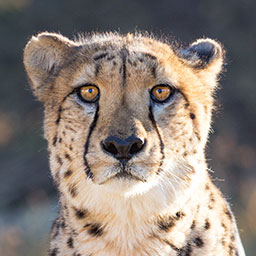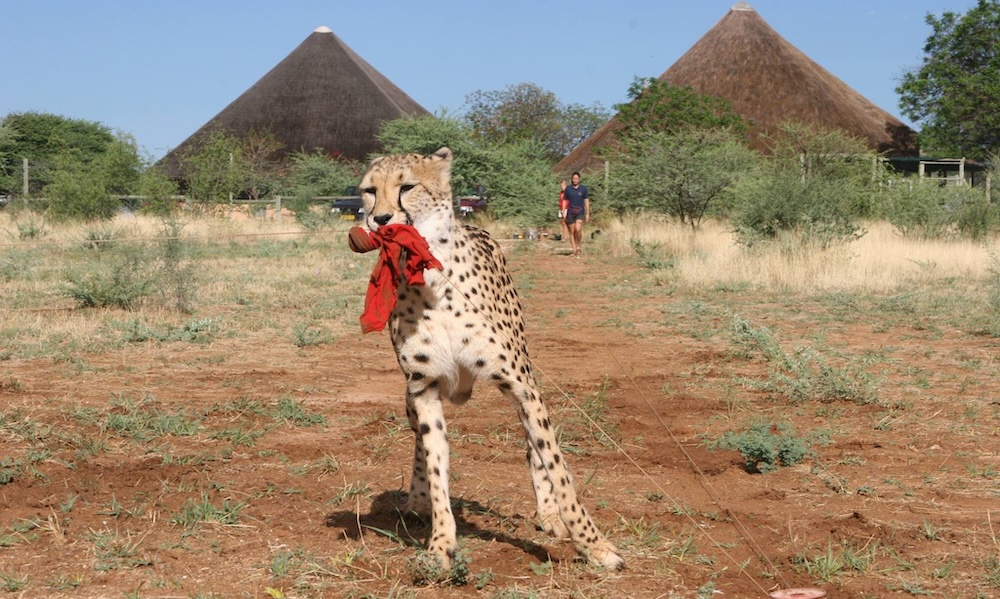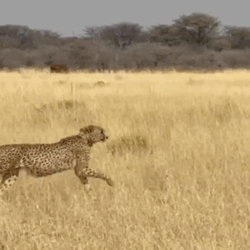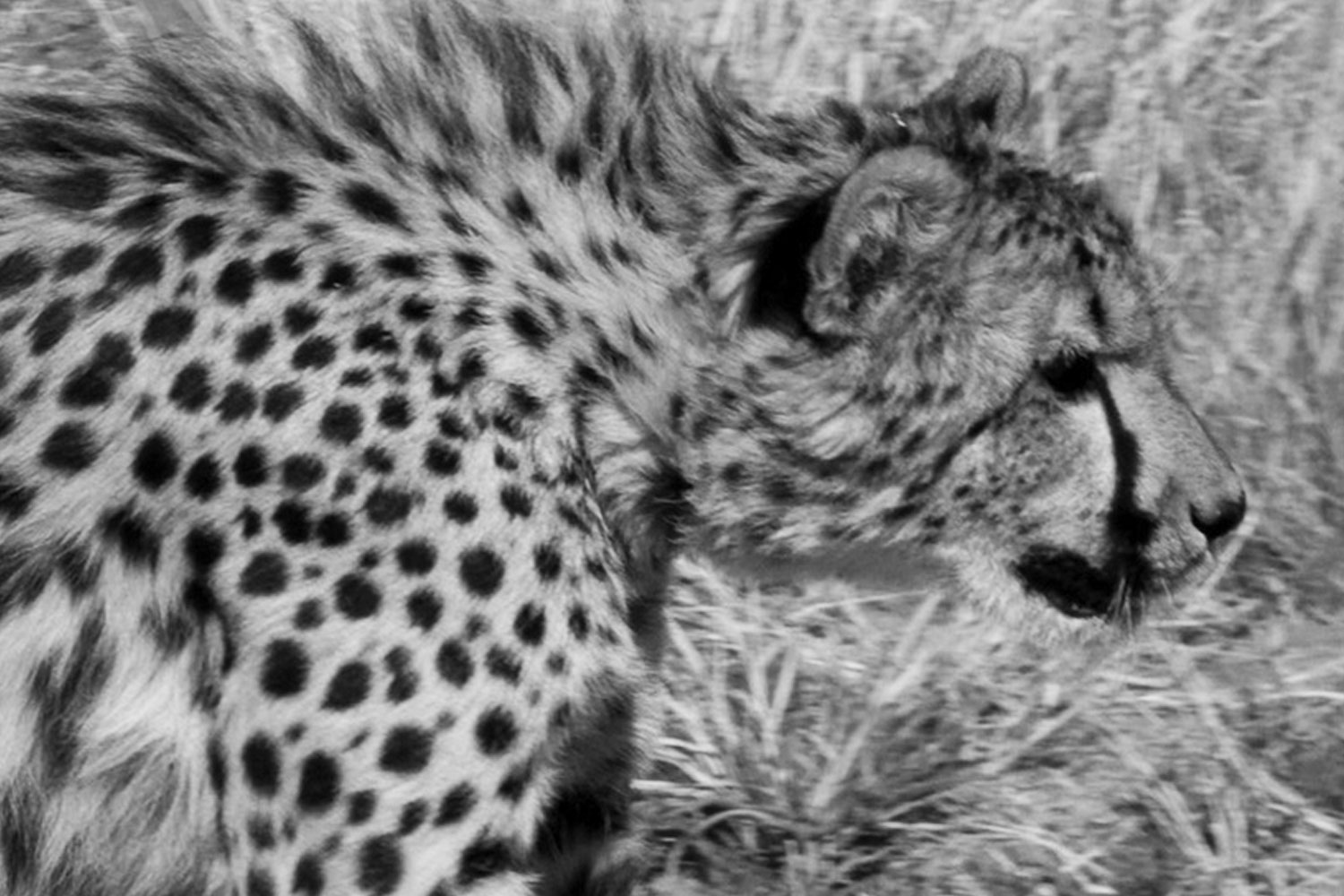The Role of A Cheetah Keeper at CCF
-

- by Loughlin McQueen December 4, 2024

CCF Canada was thrilled to host a live virtual “All About Cheetah” event with Becky Johnston and Nathalie Santerre, two Canadians who have worked at CCF Namibia and the Cheetah Rescue & Conservation Centre in Somaliland. We were honoured to listen to their stories and experiences in their role as a Cheetah Keeper. It became clear that the Cheetah Keeper has core responsibilities, and also some differences between the Namibia and Somaliland Centres. CCF Namibia receives tourists at their centre while in Somaliland their operations centres on the 96 cheetahs which often requires additional care.
Although the schedule varies in each location, the Cheetah Keepers are responsible for the well being of the cheetah – ensuring their security, proper nutrition, fresh water, clean and secure enclosure, provide prescribed medications and ensure enrichment activities.

Cheetah Run
In Namibia, the mornings usually begins with a cheetah run. Exercise is an important part of the daily routine for CCF resident cheetahs – both for fitness and quality of life! The ambassador cheetahs in Namibia will run after a lure where tourists, on the other side of the fence, will be able to see the cheetah in action. The Cheetah Keepers will also educate visitors about cheetah care, and provide more information about the cats in residence. This is not the case in Somaliland.
Cheetah Count
Both in Namibia and Somaliland, the cheetah keepers will start the day by doing a full perimeter check of the enclosures to ensure no animals have escaped or entered. During the rainy season, fence integrity must be checked, ensuring no sections have washed away. If there is a fix that needs to be made, such as a hole, the Cheetah Keepers are responsible for repairs unless it is a larger project in which the maintenance department is called. In Namibia, any required repairs are assigned to the maintenance department.

Food Preparation and Water
Food preparation is another essential duty that takes considerable time and care. Just like us, cheetahs have specific dietary needs, and some may have sensitive stomachs. Water bowls are clean and replenish with fresh water.
In Namibia, cheetahs are feed 6 days a week, while in Somaliland, cheetahs are fed every two days. Keepers oversee prepping the carcasses and adding predator powder to the meat to ensure each cheetah is getting all their proper nutrients.
In Somaliland, keepers are split in two teams – butchery days and feeding days, so all tasks are completed. On the feeding days, all bones are picked up in the afternoon as to prevent attracting wildlife to the enclosures. Bones are also weighed from each group of cheetahs, and this gives the keepers the exact amount of food intake per group. This practice is important as keepers use this information to recognize potential health issues within a group and be pro-active in their care.

Health Checks
Regular physical checks are conducted to monitor cheetah health and to check for any bumps or scrapes. As Nathalie puts it, “The keepers are the eyes of the vet team, and we are the voice of the cheetahs.” If cheetahs need medical care that does not require the vet team, keepers oversee administrating it without sedation and this is done through a routine.
Medical routines for the permanent resident cheetahs are developed between keeper and cheetah and many cheetahs voluntarily participate in procedures, reducing the need for sedation and minimizing stress. Cheetahs that are to be released back into the wild do not receive the same training preventing the cheetahs from becoming habituated to humans.

The Cheetah Keeper must know each of their cheetah’s personalities, and quirks and be able to recognize when one is acting out of the ordinary. The most important role of a keeper is ensuring the well-being of each cheetah, and this is accomplished through trust and dedication by the keepers. The cheetahs will tell their keepers exactly how they are feeling, and as Becky humorously points out, “They have us very well trained, not the other way around.”
Do the cheetah return into the wild?
In Namibia, part of CCF’s efforts to keep cheetahs in the wild involves rescuing and rehabilitating cheetahs injured or orphaned as a result of encounters with humans. Some of the rescued cheetahs only require minimal medical attention. However, in some cases, the rehabilitation process can take much longer, depending on the age of the cheetah. For example, some of the rescued cheetahs are adolescents or older cubs, and in these cases, CCF utilizes rehabilitation techniques that minimize human contact, and encourage wild behaviors. CCF has successfully returned more than 50 cheetahs to the wild in Namibia – and has developed a framework for rehabilitation and rewilding, based on 15 years of research. However, not all of the cheetahs rescued by CCF can be returned to their natural habitat – and for these cats, they will stay at CCF for the rest of their lives.
In Somaliland, the situation is different. The cheetah are rescued from illegal wildlife/pet trade and are a few weeks or months old. Generally, a cheetah needs to be at least 6 months old to be considered as potential candidate for rewildling as they will have learned from their mother how to hunt – a key skill for survival.
"Cheetah Tracks" Newsletter Sign-Up
Stay updated on the activities of Cheetah Conservation Fund in Canada, Namibia and Somaliland. We send semi-annual newsletters and info about special events and initiatives. We will not share your email address with any other organization.
Related Reading
-
November 23, 2025
Canadian Veterinarian Reunites With Rescued Cheetahs – Somaliland -
October 18, 2025
Help Us Raise $20,100 to Provide Timely Care for Our Cheetahs!



